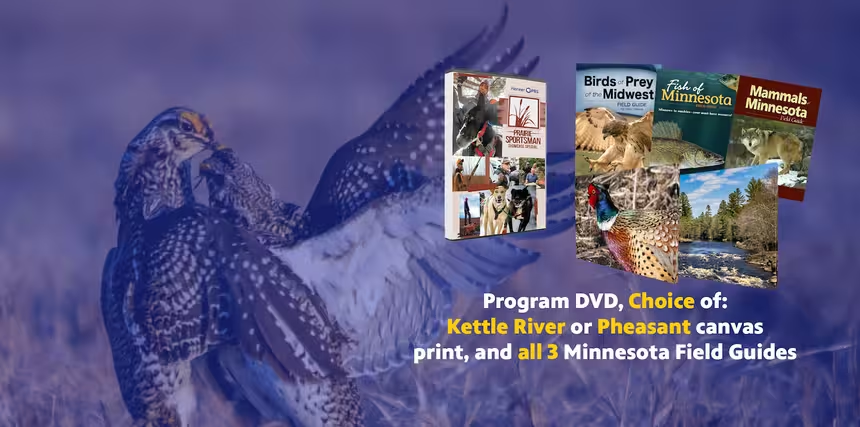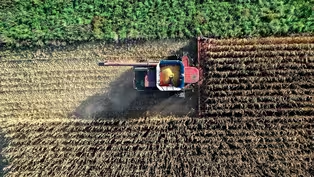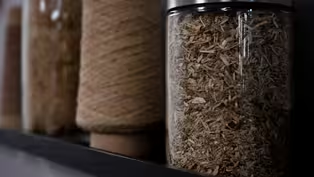Prairie Sportsman
The Science Behind Innovation
Clip: Season 16 Episode 5 | 8m 9sVideo has Closed Captions
AURI showcases new Bioindustrial Innovation Center in Waseca.
AURI, a nonprofit research institute, replaced an aging laboratory in Waseca with the new Bioindustrial Innovation Center that focuses on agricultural coproducts like crop fibers and biogas. AURI was created by the State of Minnesota to investigate new opportunities in value-added agriculture and operates five regional laboratories.
Problems playing video? | Closed Captioning Feedback
Problems playing video? | Closed Captioning Feedback
Prairie Sportsman is a local public television program presented by Pioneer PBS
Production sponsorship is provided by funding from the Environment and Natural Resources Trust Fund, West Central Initiative, Shalom Hill Farm, and members of Pioneer PBS.
Prairie Sportsman
The Science Behind Innovation
Clip: Season 16 Episode 5 | 8m 9sVideo has Closed Captions
AURI, a nonprofit research institute, replaced an aging laboratory in Waseca with the new Bioindustrial Innovation Center that focuses on agricultural coproducts like crop fibers and biogas. AURI was created by the State of Minnesota to investigate new opportunities in value-added agriculture and operates five regional laboratories.
Problems playing video? | Closed Captioning Feedback
How to Watch Prairie Sportsman
Prairie Sportsman is available to stream on pbs.org and the free PBS App, available on iPhone, Apple TV, Android TV, Android smartphones, Amazon Fire TV, Amazon Fire Tablet, Roku, Samsung Smart TV, and Vizio.

Prairie Sportsman Premium Gifts
Do you love the great outdoors, hunting, fishing, hiking and conservation? Consider becoming a friend of Prairie Sportsman to support it and receive gifts with your contribution.Providing Support for PBS.org
Learn Moreabout PBS online sponsorship(spirited music) - [Bret] Modern agriculture is finding more value in our farm fields.
In Minnesota, plant fibers are being turned into building materials, manure and food waste are converted to methane biogas, and new perennial grains like kernza are being added to baked goods and brewed into beer.
(lively music) (upbeat music) About 35 years ago, the state of Minnesota launched AURI, a research institute with five laboratories that are investigating new opportunities and value added agriculture.
- So I've been with AURI for 24 years, and oftentimes people think, "That's a long time to be with one company."
The unique thing about working at AURI and working for AURI is we're always seeing new innovations, new ideas.
- [Bret] AURI helps entrepreneurs and established companies design and test ag derived products in areas like renewable energy, industrial products, and emerging food markets.
- Here at the AURI Bioindustrial Innovation Center, we focus on agricultural co-products, and that is generally a secondary product base after a primary product is developed.
So the best example I have is take ethanol.
You have corn in the commodity.
You haul that corn into an ethanol plant.
They make ethanol, that's your primary product, but the co-product is distillers.
Distillers once was viewed as a lower value co-product.
Well, here, with a lot of research R&D that the university, AURI, so many people in the industry have done, they realize that the distillers has the same energy value, the nutrient content that the original corn did.
And now it's being used in poultry diets and livestock diets all over the place.
(lively music) - [Bret] With help from the state, AURI replaced an aging co-products lab in Waseca with a brand new facility that doubled the space for drying, pelleting, milling, and digesting.
Senior scientist Alan Doering showed us around the facility, starting with the decorticator AURI purchased to study hemp.
The machine's rollers crush hemp stocks and fingers tear fibers loose.
- And then you end up with your fiber that looks clean like wool.
Nice and fluffy.
- [Bret] A pellet mill helps innovators design product prototypes.
- The size of that pellet is dictated by what type of die you use.
The smaller dies, those are typically used for fertilizers, new feed development, new feed additives.
So you can see we have quite a collection of dies.
So when we help companies develop or prototype their next product, we have a wide range to do the testing on.
Another service that we offer at AURI is drying.
You know, and we have such a focus here on agricultural co-products.
Oftentimes, those co- products are high in moisture.
When order to add value to 'em, you need to dry 'em.
That's typically a very expensive cost.
So there's different methods that we investigate.
So this is our fluidized dryer.
It's really cool when it runs.
(upbeat music) The food grade lab is another resource that we provide a lot of people.
We get various phone calls to produce food grade materials, and one of the things that has kept us most busy is cold pressing oil.
So over in this corner, you'll notice we have a cold oil press.
You put the seed in on the top.
There's a screw that keeps pushing that seed.
By friction, it generates heat.
That helps liberate or free some of the oil.
The oil drops out and the meal comes out the other end.
The next step is to come over here.
We have an oil press.
Put your oil in here, add air to put it under pressure.
It drives the oil through these plates and then into your collection vessel.
And you will end up with an oil that's just crystal clear, ready to go on a store shelf if you wanted to do that for prototype development or testing.
Or if you're doing actual cooking or frying tests, you can use it.
- [Bret] The food lab includes retsch, burr, and stone mills.
Very small scale, pilot scale, but just for generating test material for the clients that we serve.
Then the last thing that we do in here is our seed cleaning research.
What you'll see here is a impact dehuller.
What people might be most familiar with the product that goes a machine like this is think of your wild rice.
Another new grain that we're working with quite a bit is kernza.
These are grains that have a hull attached to the outside of them.
What you do is you slowly feed it into this machine.
Inside, there's a propeller turning around with with paddles that just basically throws it against the outside edge.
What that does is it shears or fractures that outside hull away from the grain.
From there, we take the material over to our sieve and we have a variety of screens to separate the fiber, the organic matter away from the seed, so your seed comes out clean.
There's a lot of interest in kernza, believe it or not, in the brewing and the distilling industry because of the unique flavors it brings.
- [Bret] One of AURI's fastest-growing research areas is making biogas from ag waste.
- Here's where the product comes in.
Right here is our holding tank.
So we will get material on IVC totes, lift it up here with a forklift, dump it in, and it's ready for testing in the digester.
So we have two 1,500 gallon tanks that we operate as an anaerobic digester.
So with the focus on renewable natural gas, we are looking at evaluating different agricultural waste streams or feed stocks that are liquid that can be digested.
We'll identify how much methane will the material produce.
What we do is every day, we feed in a given amount, so we track the amount of material going into the digester.
We have flow meters where we know how much gas is being produced every day where we have equipment to plug into the port, measure the gas.
That's how we know how much methane is in the gas, CO, CO2, oxygen and so forth.
So we're able to give clients a very accurate profile of how their material is going to act in a scaled up digester.
There's a variety of companies in the state looking at operating a digester, cleaning up that methane, moving it into the gas line for renewable fuel.
We work with a lot of existing industry, a lot of entrepreneurs.
We help 'em develop new feed stocks.
We may help 'em develop or improve a current product or process that they already have in the marketplace.
Everything focused on adding value to agricultural commodities or grains or products from Minnesota.
Video has Closed Captions
Clip: S16 Ep5 | 8m 8s | Bret Amundson visits Urban Ice Anglers on their goal of getting 10,000 youth on the ice. (8m 8s)
Video has Closed Captions
Clip: S16 Ep5 | 9m | AURI researchers design hemp threads for road construction erosion-control mats. (9m)
10,000 Youth Ice Anglers and Ag-Based Products
Preview: S16 Ep5 | 30s | Urban Ice Anglers gets kids outside; designing erosion-control mats; Bioindustrial Innovation Center (30s)
Providing Support for PBS.org
Learn Moreabout PBS online sponsorship
- Science and Nature

Explore scientific discoveries on television's most acclaimed science documentary series.

- Science and Nature

Capturing the splendor of the natural world, from the African plains to the Antarctic ice.












Support for PBS provided by:
Prairie Sportsman is a local public television program presented by Pioneer PBS
Production sponsorship is provided by funding from the Environment and Natural Resources Trust Fund, West Central Initiative, Shalom Hill Farm, and members of Pioneer PBS.




